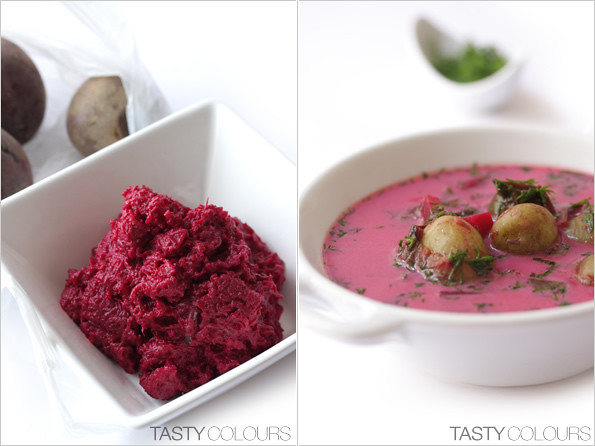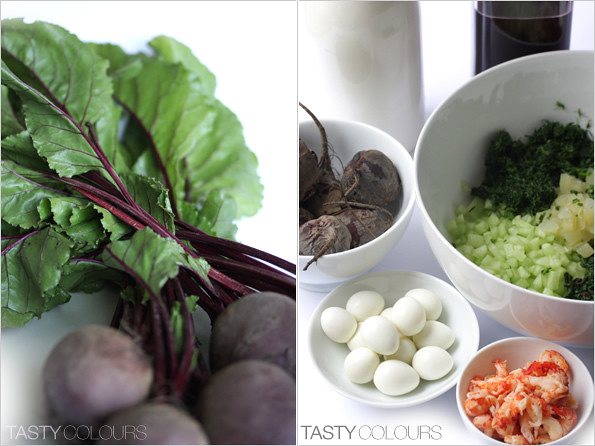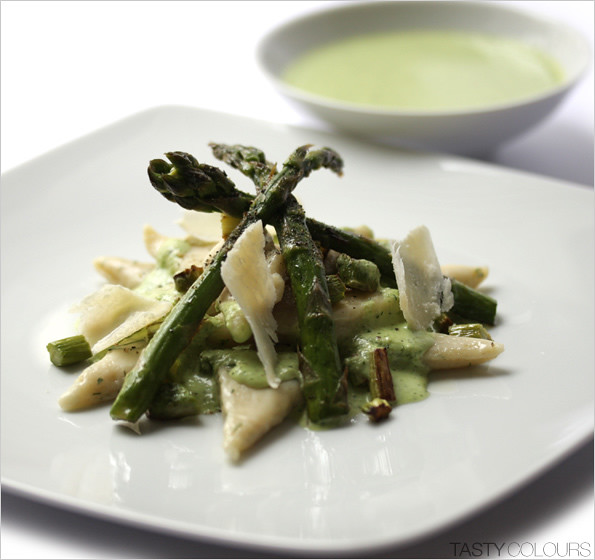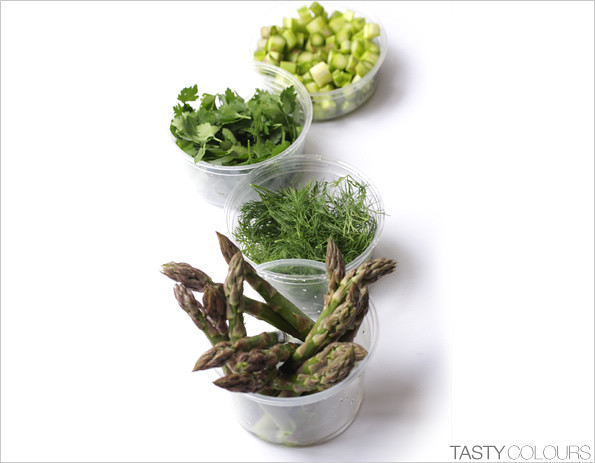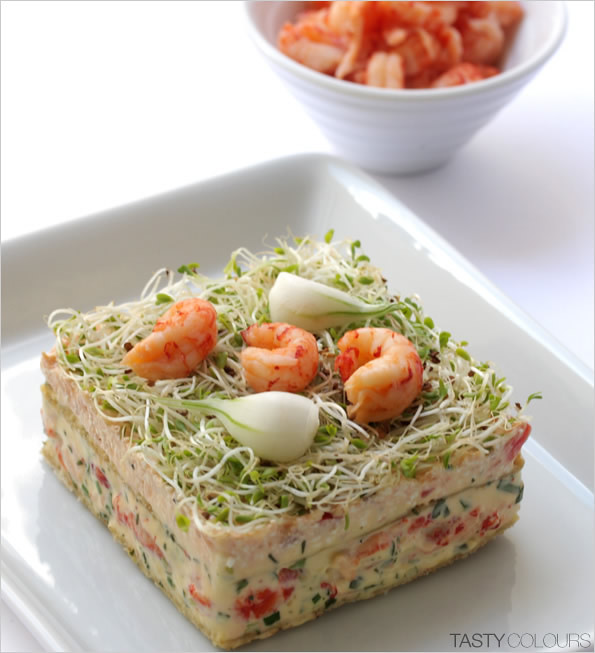
Sandwich is a very popular type of food preparation in Poland. Already in 1860, the author of the first famous Polish cookbook, Lucyna Ćwierciakiewiczowa, mentioned small tartines topped with baked venison, pâtés, hams, salmon and sardines, served on elegant parties.
Now, in Polish we use the word “kanapka”, which describes a sandwich made of two slices of bread with one or two fillings between them. It is also used to describe one slice of bread with a topping or several toppings, which is called an open sandwich.
One can find more sophisticated or expensive toppings in fancy stand-up parties nowadays too. But first of all, simple sandwiches, using ingredients that are with easily accessible, are served on a daily basis in nearly every Polish home. It is a fact that slices of bread topped with cheese, sausages, ham, pâtés, or spreads (curd cheese, other cheeses, eggs or smoked fish mixed with favorite ingredients and placed on a sandwich) and some vegetables is the most popular version of Polish style breakfast ("śniadanie"). In many homes, especially those where families follow the traditions, people often eat sandwiches for supper as well. This is due to the fact that “obiad”* is the main meal whereas dinner is not. Obiad usually is eaten between 2 p.m. and 3 p.m. Of course, the younger generations living in large cities often adopt different culinary habits, closer to those one can find in Western European states. They eat lunch in place of “obiad”, and a hot dinner as a main meal, which slowly replaces traditional Polish sandwich dinner.
I grew up on Polish style sandwiches. When I was a kid, breakfast usually consisted of open sandwiches. They were followed by a second sandwich, a closed one, which was eaten at school as a “second breakfast” ("drugie śniadanie" - as we say in Poland), around 11 am. This sandwich was prepared by the parents, was wrapped in paper and often accompanied by an apple. In the seventies and in the early eighties I did not know hamburgers, the only fast food I knew was French frites or hot dogs, but they were not served in schools (and I believe, they still are not). Bananas were not available at that time, as they were luxury products. Oranges were usually coming from Cuba, and they were sour, green and often non-eatable.
In high school (or rather, lycée), a sandwich was as valuable as a U.S dollar because nobody would survive until “obiad” without one, and only a few parents were still preparing sandwiches for their kids.
Then, often the third set of sandwiches was served for dinner (in Polish “kolacja”), around 6 or 7 p.m.
At the beginning of the eighties, my family became the happy owner of a miniscule Fiat 126P (by the way, it had been stolen one day and found on the following day) and thanks to that, we could travel all over Poland during the holidays without using any trains, which were dirty and overcrowded. My mom was always preparing a provision of tens of sandwiches and hard boiled eggs.
Besides, sandwiches (or "canapés") were mandatory served not only at family meetings, but also on special occasions: birthday parties, name day celebrations (which are important in Poland, too), office’s conferences and trips. It was incredible, even a one or two hour train trip required extra food, and right after a train left a station, one could hear around rustling of paper coming from unwrapping sandwiches. Some older people kept this sandwich habit until today.
When I was working as a corporate lawyer in Kraków, we had been spending hours on preparation of due diligence reports outside the law firm, having sandwiches served for an early lunch, by local canteens. Fixing some businesses in public administration offices or courts’ administration buildings, I could easily notice that a sandwich, like a client, was an inseparable “part” of the office ambience, presenting itself proudly on plates next to a cup of tea or coffee, sipped all day long by office clerks.
In these circumstances, it rather is not easy not to have any sentiment for sandwiches. Well, I do not eat them, now, three times per day, like when I was a kid, but still quite often I have them at least for breakfast. As opposed to my French husband, who is a pain-au-chocolat guy, I prefer salty breakfasts and bread with savory toppings than tartines with fruit preserves. And when we’re travelling with our car from Paris to Kraków, I always prepare a whole box of various sandwiches.
The most popular topping for Polish style sandwiches is cheese and charcuterie: sausages and hams, tons of which you will find in every food store. I only wished that the quality of charcuterie (Poland has great traditions in preparation of smoked hams and sausages), did not become a victim of industrialization after the collapse of communism. Unfortunately, there exist thousands of industrially made hams and sausages with artificial flavors and chemical additions, meaning products of a lower quality. Good quality charcuterie costs a lot of money. Products from the best producers, using traditional methods, are very rarely available in shops, as usually most of their production supplies good restaurants.
And despite many chefs whose opinion is that sandwiches are like “a drug for a hungry crowd”, I like sandwiches. What about you?
Today’s proposition of sandwiches is based on other Polish flavors and ingredients: Polish style curd cheese (tvarog) which may be replaced by cottage cheese; this cheese is mashed and may be mixed with chopped ham, sour cucumbers, raw spring vegetables, crayfish, smoked fish, horseradish, fresh herbs and eggs (this is what we call spread – “pasta” in Polish). They usually are seasoned with some fresh herbs, salt, pepper, caraway and powdered paprika. You can mix all those ingredients according to your liking.
I prepared my sandwiches using professional rings, which I bought a couple of weeks ago since I really wanted to use them. However, do not think that I usually spend hours preparing sandwiches like these. I rather prepare them in a couple of minutes, mixing quickly my ingredients.
You will find below some ideas for Polish style sandwich spreads. In general, they consist of easy-to-find ingredients (except for crayfish and bryndza). The proportions that I am using are for 1 huge sandwich or 2-3 small ones. You can use this spread idea to make one layer simple sandwich (this is how I usually eat them), just topped with some chopped vegetables and herbs.
The method of preparation of spreads is very easy: in a bowl, just mix all ingredients until the mixture is homogenous. Finally, season with salt and pepper, or other spices, according to your taste.
I decided to play a bit with my rings and here you have three examples of double layered, a bit posh (that’s what I have heard), sandwiches.
I did not calculate any cost for these recipes. Usually you use a bit of this and that to do your sandwich.
Polish Style Sandwich Spreads
Cucumber – radish
Ingredients:
2 heaped tablespoons Polish style curd cheese (to buy in stores carrying Polish or Russian food), or cottage cheese**
1 tablespoon natural yoghurt or cream
1 tablespoon radishes, finely chopped
1 tablespoon peeled cucumber, finely chopped
1 teaspoon chives, finely chopped
Salt
Pepper
A few drops of lemon juice
Smoked Mackerel
Ingredients:
3 heaped tablespoons smoked mackerel (or sprats or sardines)
1 tablespoon good mayonnaise
1 teaspoon Dijon mustard
1 teaspoon chopped green onions
Salt
Hard Boiled Egg – Horseradish
Ingredients:
3 heaped tablespoons chopped hardboiled egg (1 big or 2 small eggs)
1 tablespoon natural yoghurt or cream
1 teaspoon shredded horseradish
1 teaspoon finely chopped shallot
1 teaspoon finely chopped dill
Salt
Pepper
Tomato - Bell Pepper
Ingredients:
2 heaped tablespoons Polish style curd cheese (to buy in stores carrying Polish or Russian food), or cottage cheese**
1 tablespoon natural yoghurt or cream
½ teaspoon tomato concentrate
1 teaspoon finely chopped, fried onion
1 teaspoon red bell pepper, finely chopped
1 teaspoon tomatoes, finely chopped
2-3 drops of Tabasco
Salt
Pepper
Green Herbs
Ingredients:
2 heaped tablespoons Polish style curd cheese (to buy in stores carrying Polish or Russian food), or cottage cheese**
1 tablespoon natural yoghurt or cream
1 tablespoon delicate mustard
1 teaspoon dill, finely chopped
1 teaspoon chives, finely chopped,
1 teaspoon fresh estragon, finely chopped
A few drops of lemon juice
Salt
Pepper
Ham – Cucumber
Ingredients:
2 heaped tablespoons Polish style curd cheese, or cottage cheese*
1 tablespoon natural yoghurt or cream
1 tablespoon ham, finely chopped
1 tablespoon sour cucumbers (see page XX), finely chopped
1 teaspoon chives, finely chopped
Salt
Pepper
A pinch of powdered chili
Bryndza - Chives
Ingredients:
2 heaped tablespoons Polish style bryndza cheese
1 tablespoon natural yoghurt or cream
1 teaspoon finely chopped, fried onions
1 teaspoon chives, finely chopped
Pepper
Lemon – Estragon Dressing (best for crayfish, ham and salmon)
Ham – Cucumber
Ingredients:
2 heaped tablespoons Polish style curd cheese, or cottage cheese*
1 tablespoon natural yoghurt or cream
1 tablespoon ham, finely chopped
1 tablespoon sour cucumbers (see page XX), finely chopped
1 teaspoon chives, finely chopped
Salt
Pepper
A pinch of powdered chili
Bryndza - Chives
Ingredients:
2 heaped tablespoons Polish style bryndza cheese
1 tablespoon natural yoghurt or cream
1 teaspoon finely chopped, fried onions
1 teaspoon chives, finely chopped
Pepper
Lemon – Estragon Dressing (best for crayfish, ham and salmon)
Ingredients:
1 heaped tablespoon, good mayonnaise
1 teaspoon finely chopped fresh estragon (you can use dill)
1 teaspoon lemon juice
1 tablespoon crème fraiche épaisse
A pinch of sugar
Pepper
Preparation:
In a bowl, mix all ingredients until dressing is homogenous. Season with salt and pepper according to your taste.
Green Polish – Style Dressing for Sandwiches (makes around 150 ml)
Ingredients:
3 tablespoons natural yoghurt
1 tablespoon shredded horseradish
1 egg yolk (hardboiled)
1 teaspoon mustard (preferably delicate)
1 tablespoon crème fraiche epaisse
1 tablespoon Polish style curd cheese (optional)
1 tablespoon parsley, finely chopped
1 tablespoon green onions, finely chopped
1 tablespoon chives, finely chopped
1 tablespoon dill, finely chopped (optional)
A few drops lemon juice
A pinch of sugar
Salt
Pepper
Preparation:
In a bowl, reduce with a mixer all ingredients until dressing is homogenous. Season with salt and pepper according to your taste.
Double Layered Polish – Style Spread Sandwiches (few ideas)
Cucumber-Radish Spread Sandwich with Hard Boiled Egg
Ingredients (in order of placement starting from a bottom):
1 medium slice of bread
2 tablespoons cucumber – radish spread
Few thin slices of fresh cucumber
1 hardboiled egg, finely chopped
1 tablespoon green herbs dressing
1 medium slice of bread
1 teaspoon mayonnaise
A few slices of radishes
1 coffee spoon scallions, chopped
A pinch of alfalfa sprouts for topping
Mackerel Sandwich with Tomato-Bell Pepper Spread
Ingredients (in order of placement starting from a bottom):
1 medium slice of bread (preferably whole rye)
2 tablespoons smoked mackerel spread
1 tablespoon chopped red bell pepper
1 medium slice of bread (preferably whole rye)
2 tablespoons tomato – bell pepper spread
1 tablespoon chopped tomatoes
1-2 slices of smoked mackerel
1 teaspoon shallots
One or two pinches finely chopped chives
Crayfish Sandwich with Tomato – Bell Pepper Spread
Ingredients (in order of placement starting from a bottom):
1 medium slice of bread
50 g crayfish meat mixed with 2 tablespoons lemon-estragon sauce
1 medium slices of bread
2 table spoon tomato-bell pepper spread
1 table spoon alfa alfa
1-2 scallions, chopped
* obiad – a main meal in traditional Polish culinary tradition – usually consisting of a soup, a second course (non-vegetarian and vegetarian dish)
**if you use cottage cheese, do not like yoghurt – it will be too liquid





